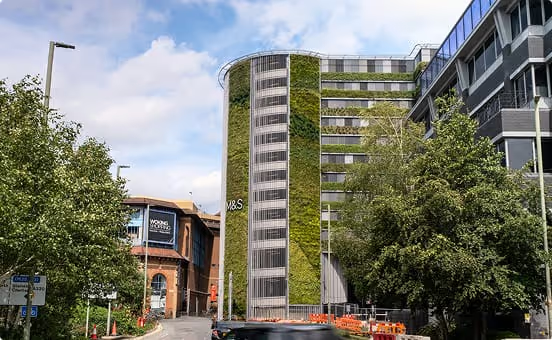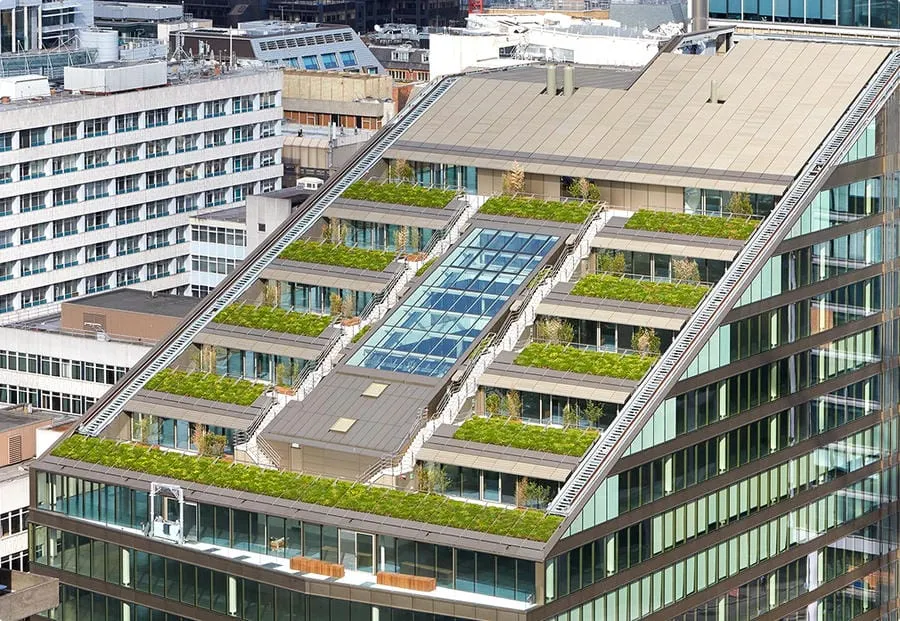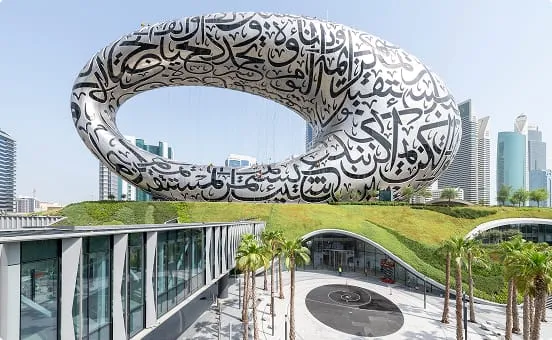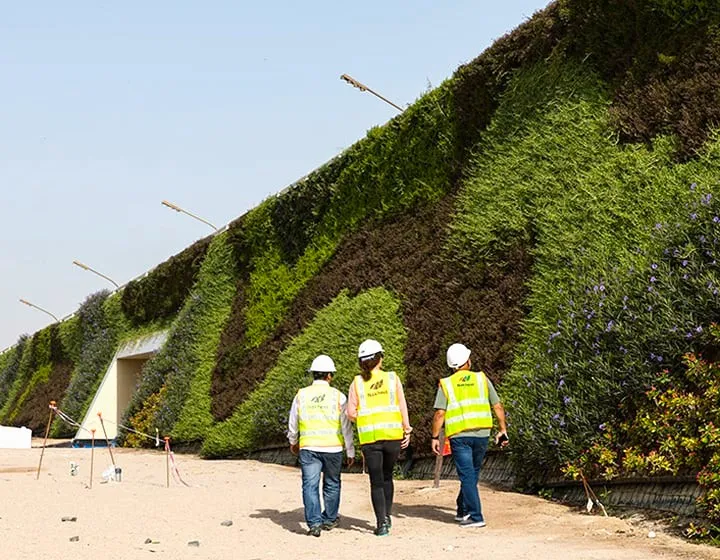The impact of a living wall
Living walls bring the benefits of nature at scale to urban spaces. Learn how they deliver a long-lasting impact.
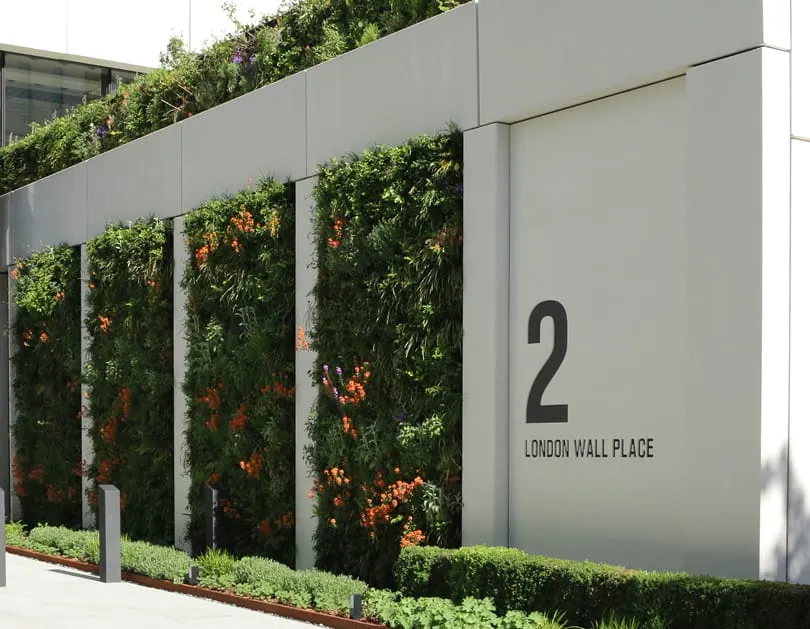
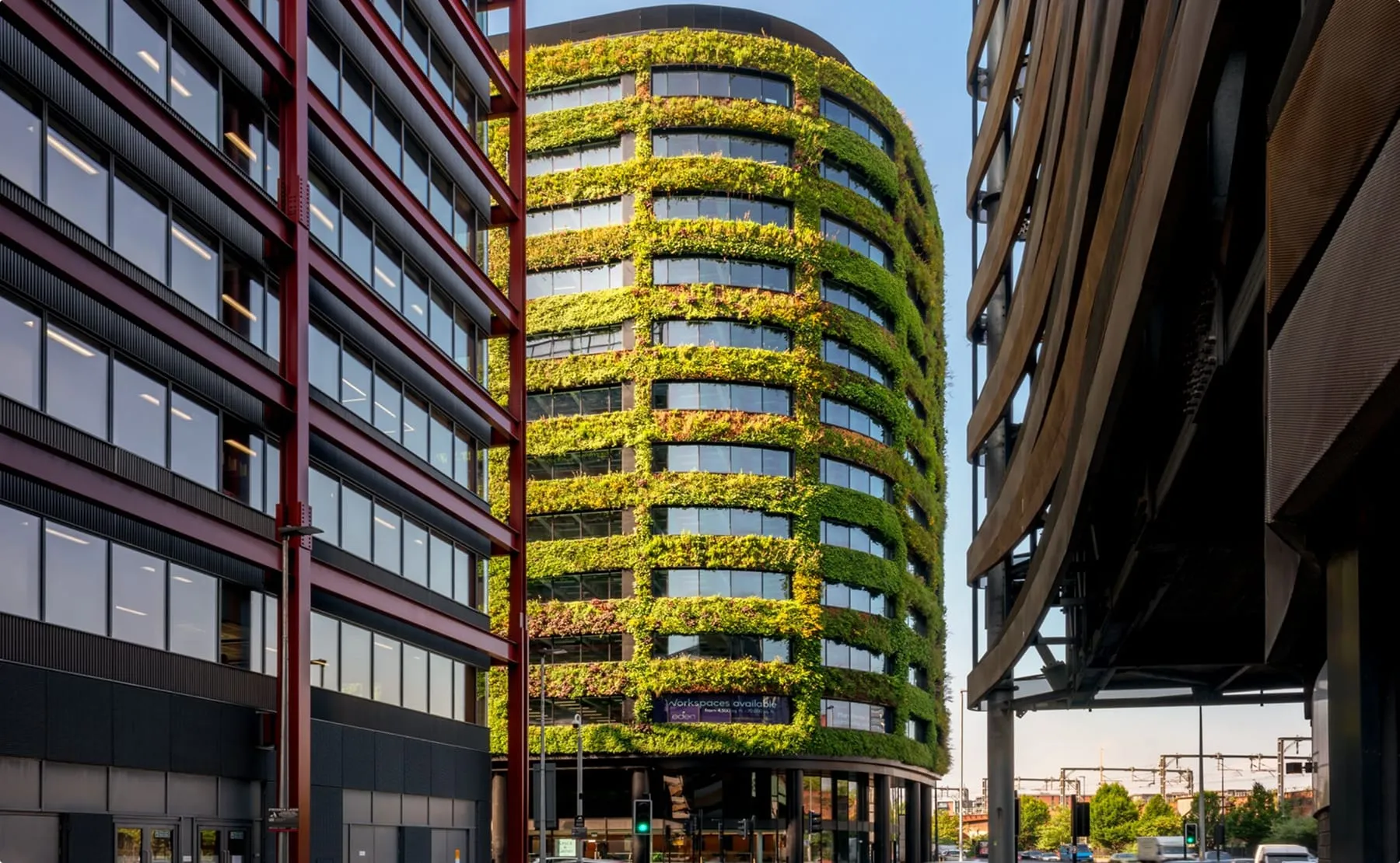


What is a living wall?
A living wall is a self-sustaining vertical garden that attaches to a building’s exterior façade or interior wall. While technically a type of green wall, it stands apart as a true living system, using real plants to provide both visual impact and meaningful environmental gains.



Proven benefits of living walls
Studies consistently show that green walls deliver measurable value.
boost in real estate values for buildings with plants nearby
increase in retail customer spend

How living walls benefit the environment
Biodiversity
Living walls can integrate native species and pollinator plants. Soil-based systems also provide habitats for wildlife including bees, birds, and burrowing insects.

Temperature regulation
Vegetation helps cool cities by shading surfaces and reducing heat absorption. Living walls can lower surrounding temperatures by several degrees, reducing the ‘urban heat island’ effect.


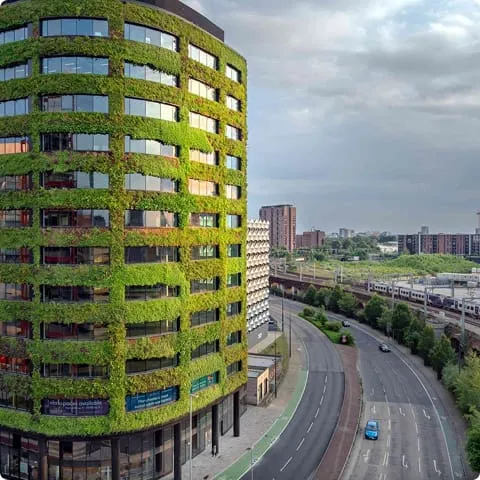
Better air quality
Living walls act as natural air filters, absorbing pollutants like carbon and dust while producing oxygen. This can make a noticeable difference — especially in industrial or high traffic areas.
Rainwater management
By absorbing rainfall, living walls help ease the burden on urban drainage systems and reduce flood risk. They can also can harvest rainwater to provide a sustainable alternative to mains supply.
How living walls help communities
Health and wellbeing
By reconnecting people with nature, biophilic design supports emotional wellbeing and reduces stress levels. Studies show that even just looking at nature can lift your mood.

Sound insulation
Living walls absorb outdoor sound through plants and soil, reducing ambient noise. In studies, they’ve lowered noise levels by up to 15dB —similar to the effect of foam earplugs.

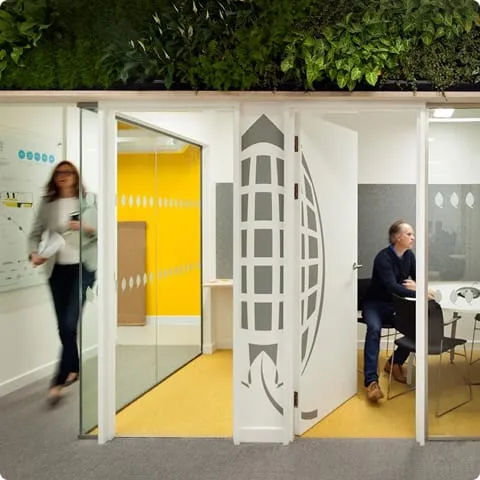
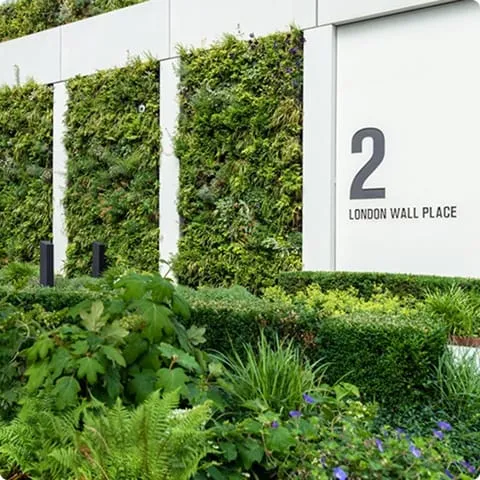
Workplace benefits
Research has found that people working in an environment with plants were 12% more productive6. They are also more creative and take fewer sick days, on average.
Social impact
Green spaces are linked to safer communities. Access to nature is associated with lower risk of crime and vandalism7.
How living walls drive ROI
Planning and regulation
Living walls help developments meet required targets for Urban Greening Factor and Biodiversity Net Gain. They also help to achieve building standards such as BREEAM and WELL.
Protective cladding
Living walls are a natural shield against wind, rain, UV radiation, and pollution. When compared to cladding, paint, and other coatings which deteriorate, greenery also looks better, longer.
Energy efficiency
By insulating façades and reducing surface temperatures by up to 15°C8, living walls can reduce a building’s heating and cooling demands — helping to save energy and lower costs.

Property value
A green façade adds kerb appeal and long-term value to both commercial and residential developments. Up to 20% increase in property value has been noted.
Visual impact
You can tailor a living wall to make the impact you’re after — whether that’s highlighting your logo, leaving a strong impression, or conveying your company’s commitment to sustainability.
Retail spaces
Green features boost rental value and retail performance. Studies link the use of vegetation to increases in rental rates on retail spaces, and increased customer spend of 8-12%.

How to maximise the benefits of your green wall
Soil is nature’s preferred living wall substrate. Unlike hydroponic systems or synthetic mediums, soil systems allow plants to grow in their natural environment — supporting healthier greenery and a greater overall impact.
What are the advantages of a soil-based living wall system?
Improved biodiversity: Soil supports a wider range of plant species, including native plants.
Greater resilience: Plants growing in soil develop stronger roots, helping them live out their full life cycle.
Water efficiency: Soil retains moisture, which uses less water and protects plants from drying out quickly if irrigation ever falters.
Environmental impact: By providing habitats for insects and filtering the air, soil meaningfully contributes to biodiversity net gain.
Living walls vs. living roofs
Both types of green infrastructure offer meaningful advantages for people, the planet, and properties, but they can vary in visibility and impact. Every project is unique, and we can help you find the right solution for yours.
In many cases, we recommend living walls when:
- You want to make a visual impact the entire city can see.
- You’re interested in custom design elements, like “planting” your logo.
- Your project involves certain structural or waterproofing concerns.
- You need to maximise green space without using rooftop area.




References
- Abhijith, K. V. et al. (2017). “Air pollution abatement performances of green infrastructure in open road and built‑up street canyon environments.” https://www.sciencedirect.com/science/article/pii/S1352231017303151
- Grant, G., & Gedge, D. (2019). “Living Roofs and Walls from policy to practice: 10 years of urban greening in London and beyond.” https://livingroofs.org/wp-content/uploads/2019/04/LONDON-LIVING-ROOFS-WALLS-REPORT-2019.pdf
- Vox, G., Blanco, I., & Schettini, E. (2018). Green façades to control wall surface temperature in buildings.” https://www.sciencedirect.com/science/article/pii/S0360132317305607
- American Society of Landscape Architects. “Greening your home.” https://www.asla.org/residentialinfo/1pager.html
- Estimate based on Viritopia’s own calculation using standard carbon conversion factors: assuming dry plant biomass contains 47.5 % carbon (average for plant tissue) and using a molecular weight ratio of 3.67 to convert carbon to CO₂ equivalents. This yields an approximate relationship of 1 kg dry biomass = 1.75 kg CO₂ captured. Values may vary depending on plant species and composition.
- Urban Planters. “Health & Green: Living and Working with Plants.” (2020). https://www.urbanplanters.co.uk/wp-content/uploads/2020/06/Health-Green-Living-Working-With-Plants-Brochure.pdf
- Ogletree, S. Scott et al. “Urban greenspace linked to lower crime risk across 301 major U.S. cities.” (2022). https://www.sciencedirect.com/science/article/pii/S0264275122003882
- Ouldboukhitine, S. et al. (2025). “Modular green walls: A sustainable architectural solution for energy efficiency in oceanic climates.” https://www.sciencedirect.com/science/article/abs/pii/S0378778825005808
Have questions about living walls?
We’d love to answer them. Get in touch to book a call, or check out our CPDs if you're learning as a team.


